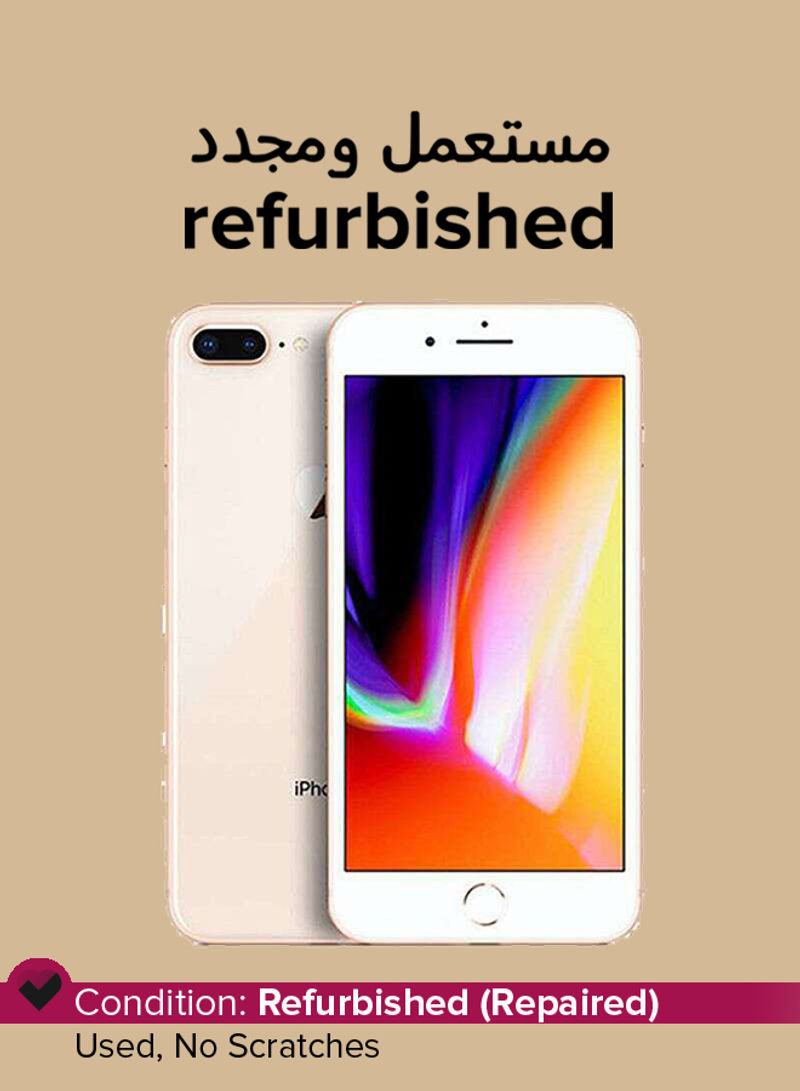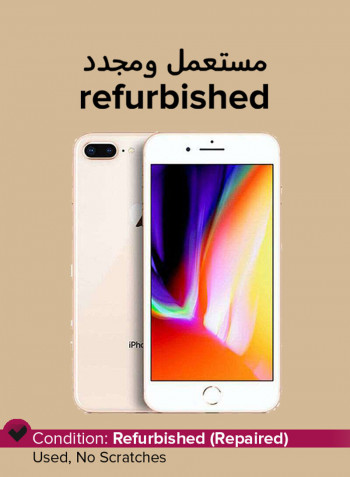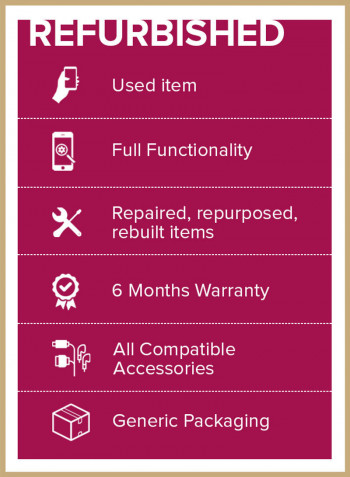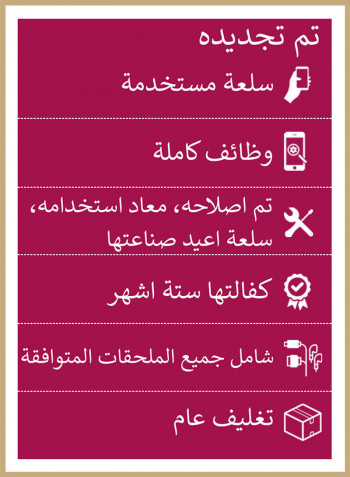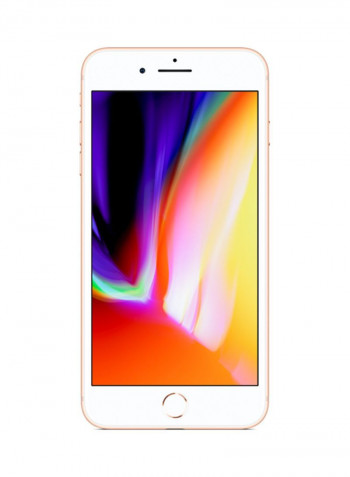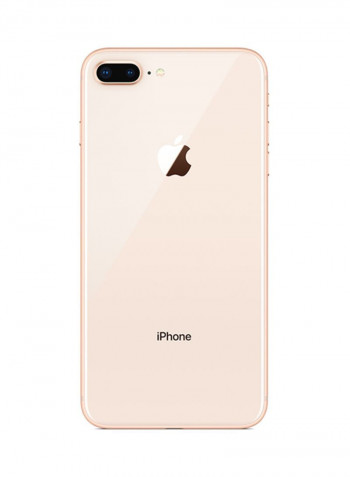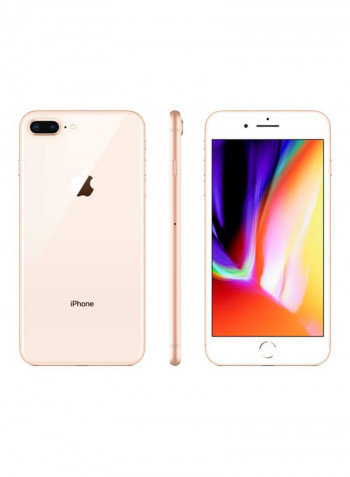External Design: Taking its cue from previous generations, the iPhone 8 and iPhone 8 Plus have the same general appearance of earlier devices. The iPhone 8 and iPhone 8 Plus have custom front and rear glass, made with a 50 percent deeper strengthening layer, fitted onto a steel substructure and surrounded with an aerospace-grade 7000 Series aluminum band. At the top of the face side of both phones are the FaceTime camera, microphone, and speaker, with the Home button featuring Touch ID towards the base. At the bottom edge is a Lightning connector, another microphone, and a stereo speaker grille. On the left side are the volume buttons and the Ring/Silent switch, with a side button on the opposite edge.On the back side are the familiar camera bumps seen in previous generations. The iPhone 8 uses a single camera lens while the Plus model has two camera sensors in the standard horizontal arrangement, with both sets of cameras flanked by a flash.
Display: The iPhone 8's display is a 4.7-inch LCD IPS screen, with a resolution of 1334 by 750 pixels, giving it a pixel density of 326. The Plus has a 5.5-inch LCD IPS display, with its 1920 by 1080 resolution equating to a pixel density of 401ppi. In terms of contrast ratio, the iPhone 8's is higher than the Plus, identified as 1400:1 and 1300:1 respectively. New to the iPhone 8 range this year is True Tone, a display technology first seen in the 9.7-inch iPad Pro. Sensors monitoring the ambient light of the iPhone's surroundings change the white point and brightness of the display to make it more comfortable to view in changing environments, what Apple calls a “paper-like viewing experience.” TrueTone can also help ease eyestrain by changing the screen's color, and prevent overexposure to blue-toned light.
A11 Bionic Chip: The iPhone 8 uses the 64-bit A11 Bionic chip with M11 motion coprocessor, a chip that Apple also uses for the iPhone X. The A11 improves upon the A10 Fusion used in the iPhone 7 and iPhone 7 Plus by adding more cores, retaining the two high-power cores and increasing the number of high-efficiency cores from the two used in the A10 to four. While the iPhone 8 lacks the Face ID of the iPhone X, the A11's power still makes it more than capable of handling 3D applications and games, as well as the world-tracking and scene recognition requirements of augmented reality apps using ARKit. Apple has also included a new image signal processor, which will aid the cameras in providing faster autofocus in low light conditions, improve pixel processing, and offer better noise reduction.
Camera: The iPhone 8 has a single 12 megapixel f/1.8 camera on the back, equipped with a 5x digital zoom. The Plus model has two 12 megapixel cameras, with the wide-angle f/1.8 aperture camera accompanied by an f/2.8-aperture telephoto version. This pair of cameras offers an optical zoom and a 10x digital zoom. Both versions use six-element lenses with a sapphire crystal lens cover and feature optical image stabilization, backside illumination sensors, a hybrid IR filter, and a quad-LED True Tone flash. Offering automatic image stabilization and HDR for photos, the rear cameras also include body and face detection, Live Photos with stabilization, autofocus using Focus Pixels, burst and timer modes, noise reduction, and improved local tone mapping.
For video, the rear cameras can capture 4K 60fps video, as well as 1080p at up to 120fps and 720p at 240 in slo-mo modes, with the latter two resolutions also able to use cinematic video stabilization alongside the optical image stabilization. Body and face detection is also available in video, as well as continuous autofocus, noise reduction, and the ability to take 8 megapixel still photos while recording 4K video. The iPhone 8 Plus is also able to use optical zoom in videos, as well as a 6x digital zoom. The iPhone 8 Plus also benefits from improvements to the Portrait mode, which uses the two rear cameras to produce a blurry bokeh effect in photographs. The new Portrait Lighting feature can apply five different lighting styles, changing not only the lighting effects visible on the subject itself, but also potentially eliminating the background altogether, giving a stage lighting effect to the portrait.
Wireless Charging and Battery: According to Apple, the iPhone 8 and iPhone 8 Plus lasts “about the same” as the iPhone 7 device family in terms of battery life. The iPhone 8 is advised to have a talk time of up to 14 hours on a single charge, and lasts up to 12 hours for Internet use, up to 13 hours for wireless video playback, and up to 40 hours for wireless audio playback. The iPhone 8 Plus boosts the same usage types to maximums of 21 hours, 13 hours, 14 hours, and 60 hours respectively. Both the iPhone 8 and iPhone 8 Plus benefit from a fast-charge capability, which allows the smartphones to reach a 50 percent charge within 30 minutes. It is worth noting that this fast-charging performance won't be available out of the box, as it will require Apple's 29W USB-C power adaptors to attain that charging speed, instead of using the included 5W USB-A charger.
Connectivity, Location, and Other Sensors: Apart from the Lightning port at the base of the iPhone 8, the wireless connectivity options in the handsets include 802.11ac Wi-Fi with MIMO, Bluetooth 5.0, and NFC connectivity, the latter of which can be used for Apple Pay transactions. Cellular connectivity ranges from GSM/EDGE to LTE, with Voice over LTE (VoLTE) supported by a number of carriers for higher quality call audio.For navigation, supported satellite-based services include assisted GPS, GLONASS, Galileo, and QZSS, with added support from cellular networks, Wi-Fi hotspots, and iBeacons. Other sensors, aside from the TrueDepth array, include a barometer, three-axis gyro, an accelerometer, proximity sensor, and ambient light sensor.Lastly, there is the inclusion of a fingerprint reader incorporated into the Home button, used for Apple's Touch ID authentication system.
